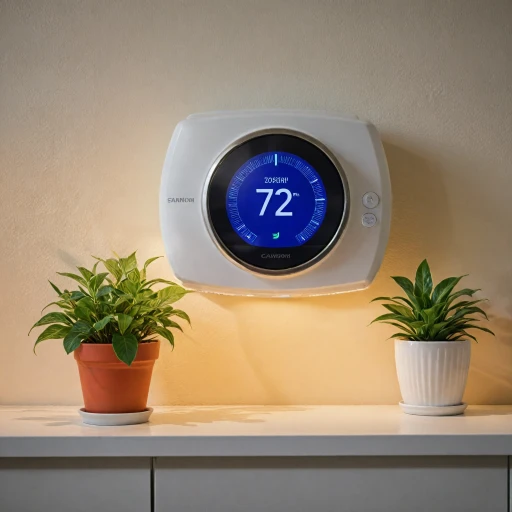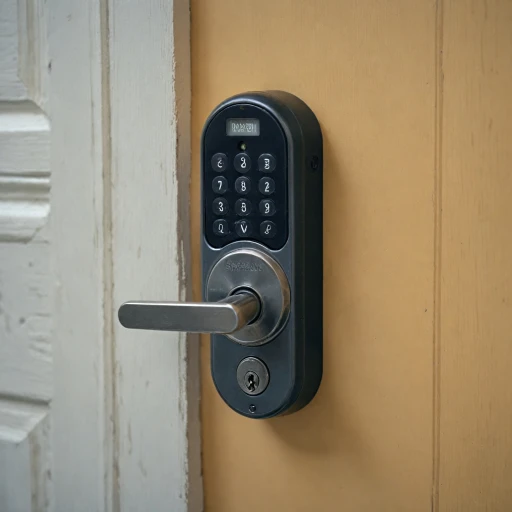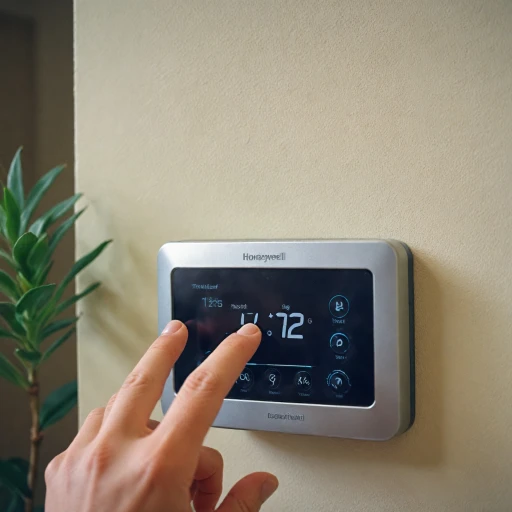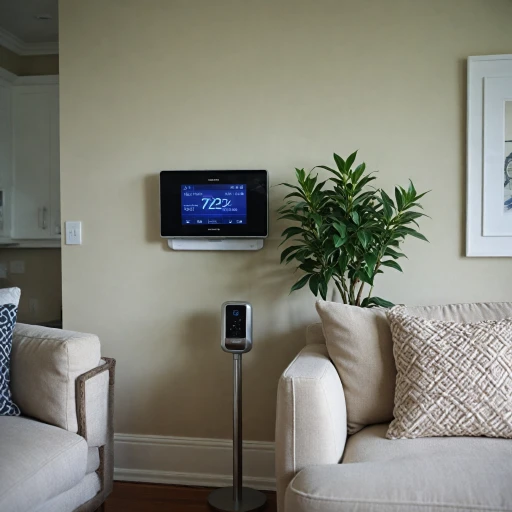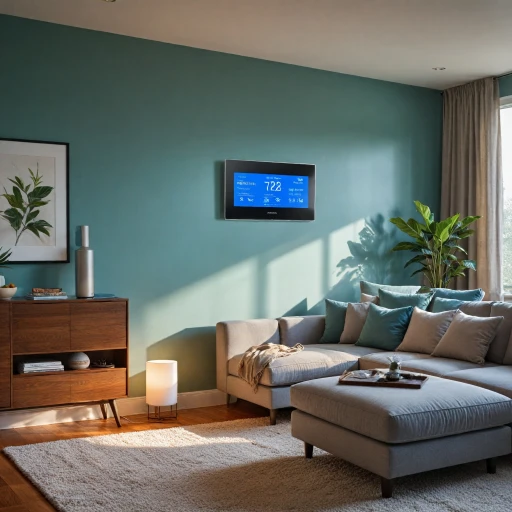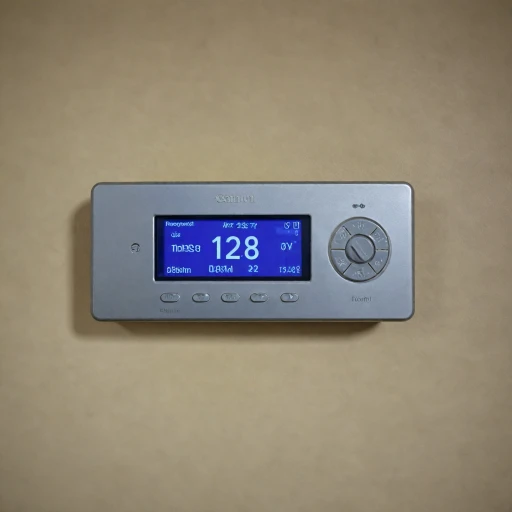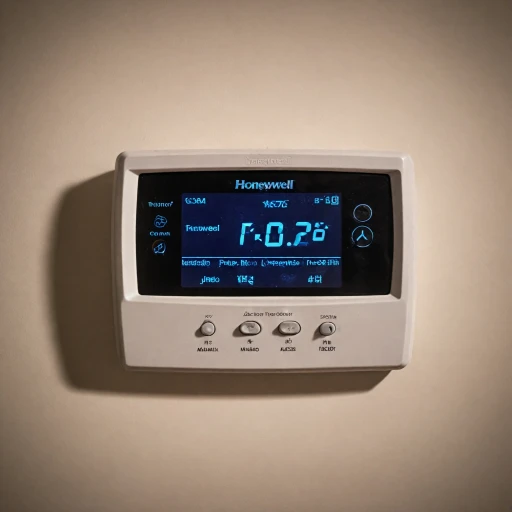
Understanding Smart Thermostats
Grasping the Basics of Smart Temperature Control
When looking to enhance your home's comfort, understanding smart thermostats is key. These devices are not just about adjusting the temperature; they're about harnessing technology to achieve optimal comfort and energy efficiency. Smart thermostats, much like their counterparts in the smart lighting ecosystem, have revolutionized how we manage our living environments. Just as a smart light switch can control lighting with an app or a spoken command to Alexa, these thermostats allow you to take control of your home's climate with ease. The benefits extend beyond mere convenience to considerations like cost savings and environmental impact. As a user, having access to real-time data on your heating and cooling systems can empower you to make informed decisions. Moreover, the relevance of neutrality in wiring, a common aspect shared with smart switches, is crucial for installation. These systems are designed to be straightforward, whether you're dealing with a neutral wire setup or a more sophisticated network involving zigbee or matter standards. Just like the variety found in smart switches with single pole or dimmer options, smart thermostats offer versatile solutions tailored to your needs. It's important to recognize the synergy between these devices and other smart home systems, akin to how kasa smart light switches or leviton decora smart dimmers integrate into a broader scheme. Similarly, features like remote sensors can be paramount in maintaining an ever-adaptable home environment. To dive deeper into optimizing your smart thermostat experience, consider exploring resources on enhancing home comfort which provide insights tailored to leveraging these innovative technologies effectively.Energy Efficiency and Cost Savings
Boosting Energy Efficiency with Intelligent Climate Control
Smart thermostats have become instrumental in promoting energy efficiency and reducing household expenses. By leveraging advanced technology, these devices help homeowners to manage their heating and cooling systems more effectively. Here's how a smart thermostat can contribute to a greener and more cost-effective home environment:- Adaptive Learning: Many smart thermostats utilize adaptive learning algorithms to understand your preferences and habits. Over time, they adjust heating and cooling schedules to maximize comfort while minimizing energy use.
- Remote Access: Accessing your thermostat remotely through an app allows you to make adjustments on the go. Whether you forgot to turn down the heat while rushing out or want to come back to a cozy home, control is at your fingertips.
- Energy Usage Reports: Smart thermostats provide insights into your energy consumption patterns. By analyzing these reports, you can identify ways to optimize efficiency and reduce costs.
- Smart Integrations: Devices like the kasa smart lighting system and smart switches can integrate with your thermostat to create a seamless smart home ecosystem. For example, your lights may dim or adjust automatically based on the thermostat settings.
- Eco-Friendly Features: Some thermostats come with 'eco' modes that adjust temperatures in a way that prioritizes energy conservation.
Integration with Smart Home Systems
Seamless Integration with Modern Smart Homes
In today's world of interconnected devices, smart thermostats have found their place as essential components of smart homes. They are not just standalone gadgets; instead, they mesh seamlessly with other smart devices, offering a comprehensive home automation experience. Smart thermostats are compatible with various smart platforms, including Alexa Google ecosystems. Whether you're using a voice command to adjust the temperature or coordinating with smart light switches like the kasa smart or Tapo, integration ensures a unified experience. This compatibility means you can control your home's heating and cooling along with your lights through the same smart home app, enhancing user convenience. Moreover, smart thermostats work well with smart switches and dimmers. You can set up routines where, for example, when the thermostat detects you're home, your lights gradually brighten thanks to a smart dimmer switch. It's all about enhancing comfort while maintaining energy efficiency. Additionally, many contemporary smart thermostats utilize protocols like Zigbee or Matter for connectivity, providing reliable and streamlined interactions across devices. This makes it easy to expand and upgrade your smart home without worrying about compatibility, and with options available at varying price points, like the regular price or sale price, there's something for everyone. Incorporating all these elements means not just better control over your home's environment but also the added peace of mind that your home's systems are working together efficiently. For those considering a smart upgrade, understanding the benefits of a baseboard thermostat can be a valuable resource, especially when planning a fully integrated smart home system.User Experience and Accessibility
Enhancing Usability with User-Centric Features
Modern smart thermostats are designed with user experience at the forefront, ensuring that they cater to a wide audience. These devices offer intuitive interfaces and features that enhance accessibility for everyday users. Smart thermostats are equipped with touchscreens, voice control via assistants like Alexa and Google, and even remote access through mobile apps. This means you can easily adjust your home's climate from anywhere, be it with a simple touch or by voice command. For those familiar with smart light technology, such as switches and dimmers from brands like Kasa or Tapo, integrating a smart thermostat can streamline your smart home ecosystem. By utilizing a common app interface, you can control lighting and temperature settings seamlessly, adding convenience and sophistication. Accessibility is further enhanced with options for voice control, removing barriers for users who might find regular control panels challenging. These intelligent devices are designed to learn your preferences and schedule patterns, autonomously optimizing indoor climate. For instance, similar to how a smart light dimmer adjusts brightness, a smart thermostat can modify temperatures automatically based on your habits. Moreover, compatibility with existing smart home systems ensures you need not worry about endless rewiring or compatibility issues. Many devices are engineered to work with regular home setups, often requiring a neutral wire or accommodating single pole configurations. As these devices continue to evolve, they offer not just comfort, but also key insights into energy consumption, providing feedback much like a smart switch indicates power usage. Coupled with competitive pricing often seen during price sales, smart thermostats offer a compelling mix of innovation and user-friendly operations while improving your home environment.Security and Privacy Concerns
Ensuring Privacy and Protection with Smart Thermostats
Privacy and security are crucial when evaluating smart thermostats. As these devices integrate into smart home systems, controlling various elements like smart plugs, dimmer switches, and light switches, it's essential to assess the safety of your data and devices. Both manufacturers and consumers must be vigilant. When setting up a smart thermostat that interacts with other devices through platforms like Alexa Google or Zigbee, it's necessary to prioritize a secure setup. Here are some considerations:- Data Encryption: Opt for devices that prioritize data protection using strong encryption protocols, ensuring that any information transmitted between the thermostat, dimmer switch, and your smart app is kept private.
- Regular Updates: Ensure your smart thermostat receives consistent software updates. These often include security patches that address any potential vulnerabilities.
- Third-Party Apps: Be cautious when integrating third-party apps, such as Kasa or Tapo, whether you're managing smart lighting or other home devices. Verify their security standards before allowing access to your smart system.
Future Trends in Smart Thermostat Technology
Emerging Technologies and Innovations
The future of smart thermostats is poised for exciting advancements, driven by emerging technologies and innovations. As smart home ecosystems become more integrated, smart thermostats will likely offer enhanced compatibility with a range of devices, including smart light switches and dimmer controls. This integration will allow users to create more cohesive and energy-efficient environments, where lighting and temperature settings can be synchronized for optimal comfort.
AI and Machine Learning Enhancements
Artificial intelligence (AI) and machine learning are expected to play significant roles in the evolution of smart thermostats. These technologies can enable thermostats to learn from user behaviors and preferences, adjusting settings automatically to maximize energy efficiency and comfort. For instance, a smart thermostat might learn to adjust the temperature based on the time of day or occupancy patterns, similar to how smart light switches can be programmed to turn lights on or off at specific times.
Interoperability with Smart Home Platforms
Interoperability with platforms like Alexa, Google Assistant, and Matter is another trend shaping the future of smart thermostats. As more devices become compatible with these platforms, users will enjoy seamless control over their home environments. This means you could potentially use voice commands to adjust both your thermostat and smart lighting, creating a more intuitive and user-friendly experience.
Focus on Security and Privacy
With the increasing connectivity of smart home devices, security and privacy will remain critical concerns. Future smart thermostats will likely incorporate more robust security measures to protect user data and ensure safe operation. As discussed in the section on security and privacy concerns, manufacturers are expected to prioritize these aspects to build trust with consumers.
Price and Accessibility
As technology advances, the price of smart thermostats is expected to become more accessible to a broader audience. This trend mirrors the evolution of smart switches and dimmers, where the regular price has gradually decreased, making smart home technology more attainable for the average consumer. Additionally, the development of devices that do not require a neutral wire, like some smart switches, could simplify installation and broaden the market appeal.

